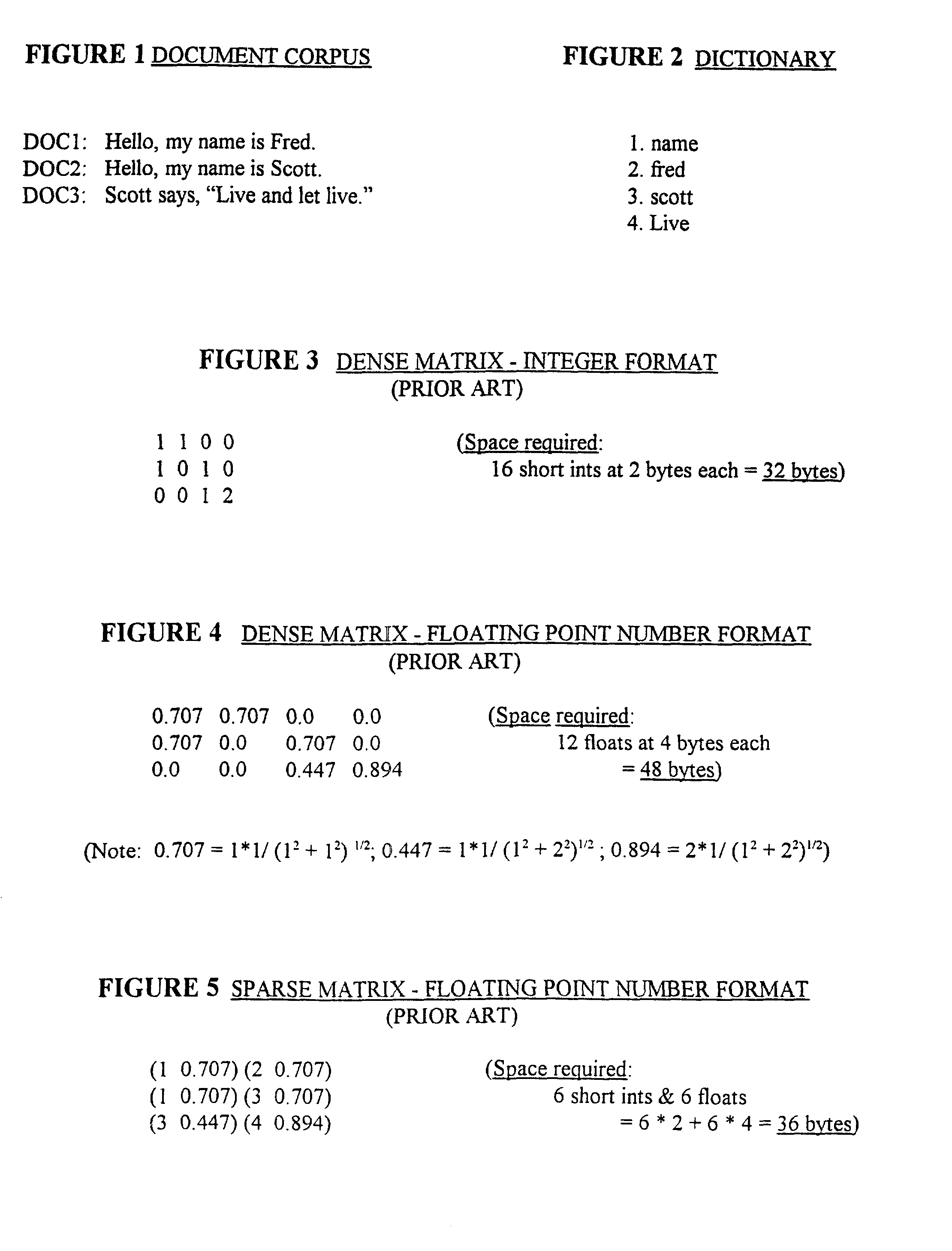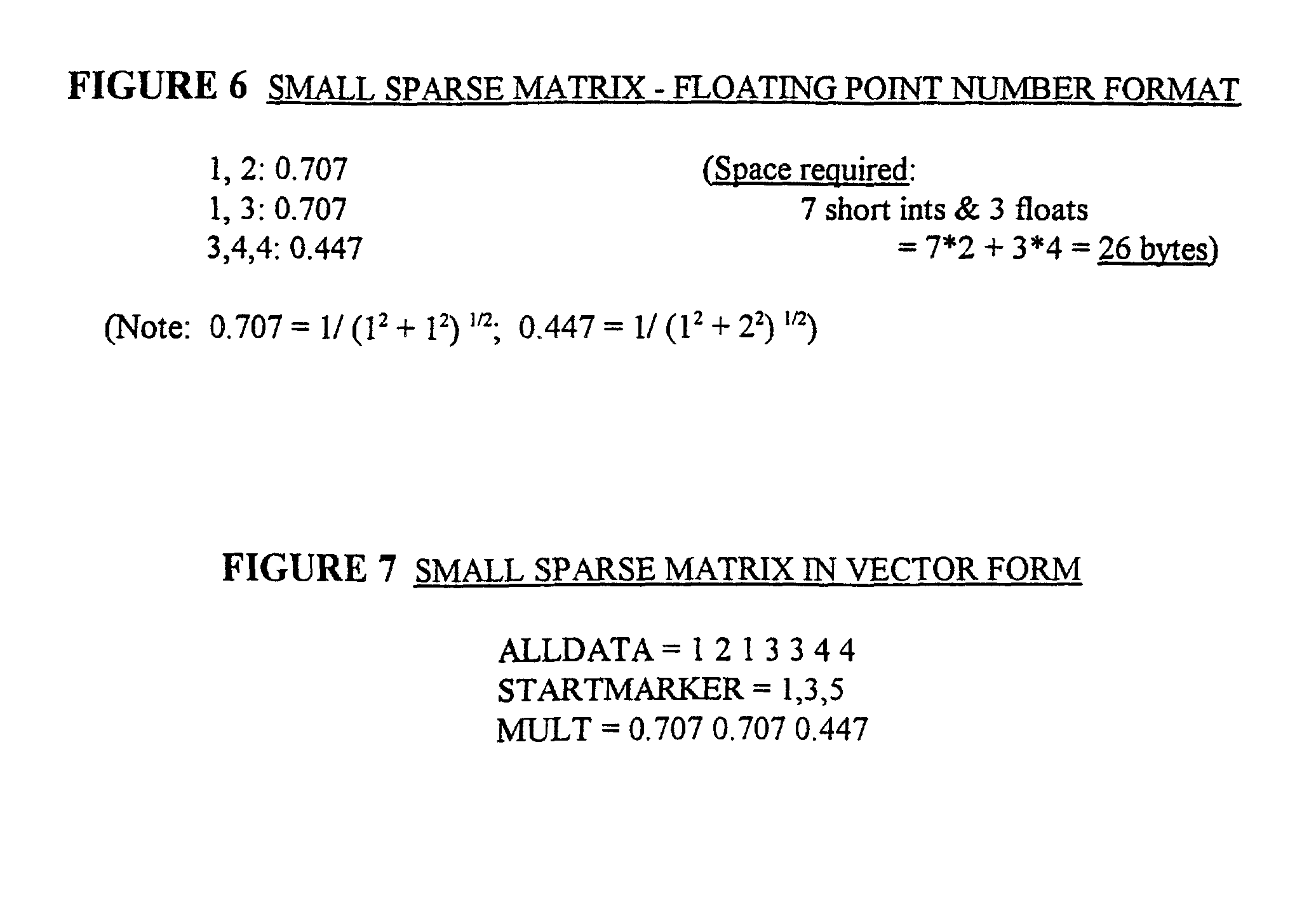Efficient storage mechanism for representing term occurrence in unstructured text documents
a storage mechanism and unstructured text technology, applied in the field of conversion and storage technique for representing the occurrence of dictionary terms in the document corpus, can solve the problems of limiting factors in the size of the memory of the matrix, difficult to categorize large amounts of unstructured text information by hand, inconsistent spelling, grammar and punctuation,
- Summary
- Abstract
- Description
- Claims
- Application Information
AI Technical Summary
Problems solved by technology
Method used
Image
Examples
Embodiment Construction
[0038] Referring now to FIGS. 6 through 9, there is shown a preferred embodiment of the method according to the present invention. FIG. 6 shows the example document corpus in the small sparse matrix of the present invention. Similar to the sparse matrix of FIG. 5, the small sparse matrix lists for all documents the unique integers associated with dictionary terms occurring in the document. However, the representation in the small sparse matrix differs in two aspects. First, each multiple occurrence of a term appears. Second, the normalization factor is a single floating number for the entire document rather than a factor for each dictionary term.
[0039] With this understanding of the information content of the small sparse matrix, FIG. 7 shows how the example document corpus from FIG. 1 would appear in RAM using an exemplary preferred method of the invention. From FIG. 7, it can be seen that the unique integers representing dictionary terms appears as a single vector ALLDATA for the ...
PUM
 Login to View More
Login to View More Abstract
Description
Claims
Application Information
 Login to View More
Login to View More - R&D
- Intellectual Property
- Life Sciences
- Materials
- Tech Scout
- Unparalleled Data Quality
- Higher Quality Content
- 60% Fewer Hallucinations
Browse by: Latest US Patents, China's latest patents, Technical Efficacy Thesaurus, Application Domain, Technology Topic, Popular Technical Reports.
© 2025 PatSnap. All rights reserved.Legal|Privacy policy|Modern Slavery Act Transparency Statement|Sitemap|About US| Contact US: help@patsnap.com



